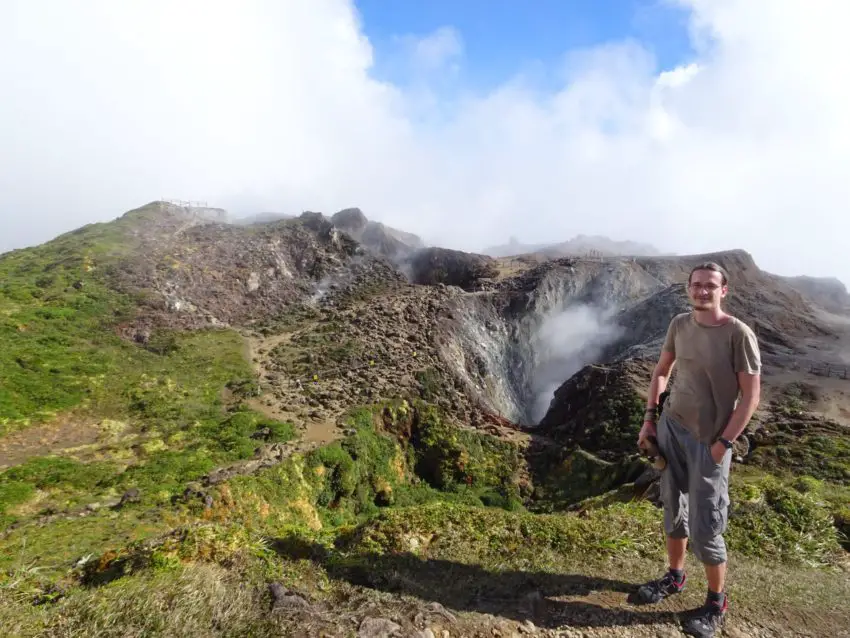Guadeloupe consists of two very different parts. Grande-Terre is the more developed eastern half and while it holds some worth-while historical and natural attractions, the real reason to come to the island for us was to visit Basse-Terre, the wilder and arguably more beautiful western half.
The rugged interior of Basse-Terre is dominated by several mountains and foremost among these is La Soufrière Volcano, slap-dash in the centre of the beautiful Parc Nationale de la Guadeloupe.
Standing at 1467m (4813ft.), La Soufrière is not only the highest point on Guadeloupe but on all the Lesser Antilles and its imposing shape can be seen from most parts of the island on a clear day.
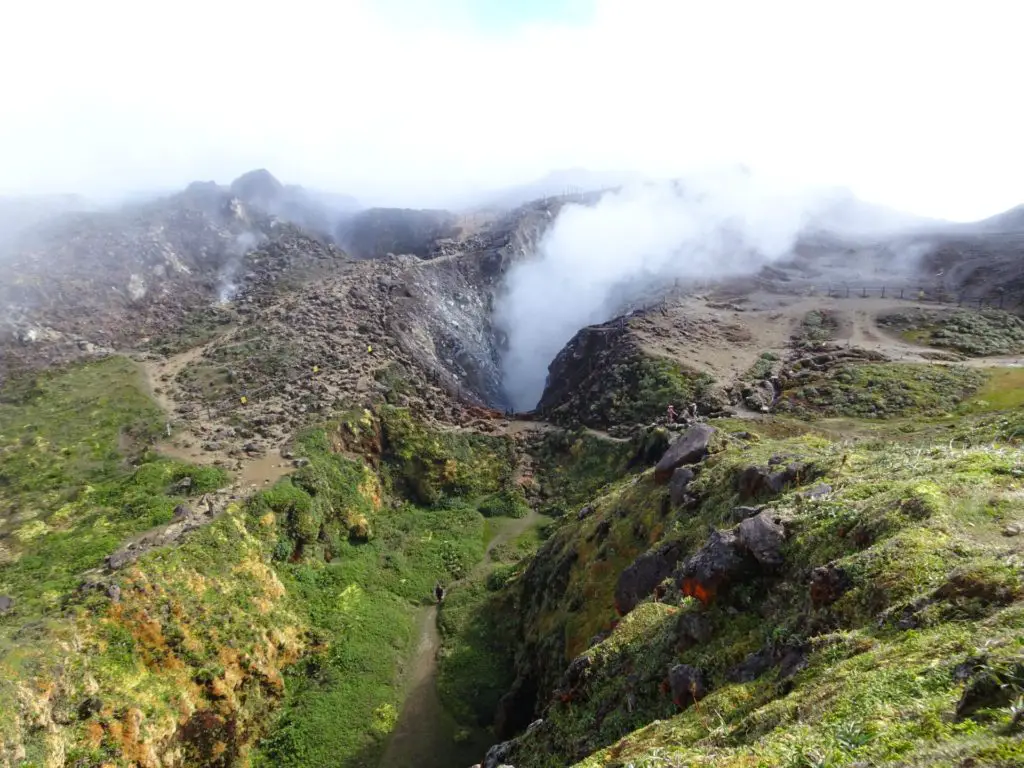
Clear days seem to be in short supply, though, and when we were there it was mostly shrouded in clouds, which might be due to the fact that it’s still very much an active volcano, constantly producing it’s very own smoke screen.
In fact, it’s still seismically so active that five eruptions have been recorded since 1718, the most recent one in 2021. Werner Herzog immortalized the volcano in a short documentary with the foreboding title “La Soufrière – Waiting for an inevitable disaster”.
In times when disaster isn’t impending, climbing the volcano is a very rewarding experience and one of the must-do activities on Guadeloupe, as it offers great views of the surroundings and a fascinating chance to peek into the smoking crater.
This post may contain affiliate links, and I might earn a small commission at no additional cost to you. For more info, click here.
How to get to the trailhead to La Soufrière
The starting point for the most popular route along the western slope of the volcano is located near Saint-Claude, which technically is situated already halfway up the mountain. Saint-Claude can easily be reached from the nearby island capital of Basse-Terre by taking the public bus.
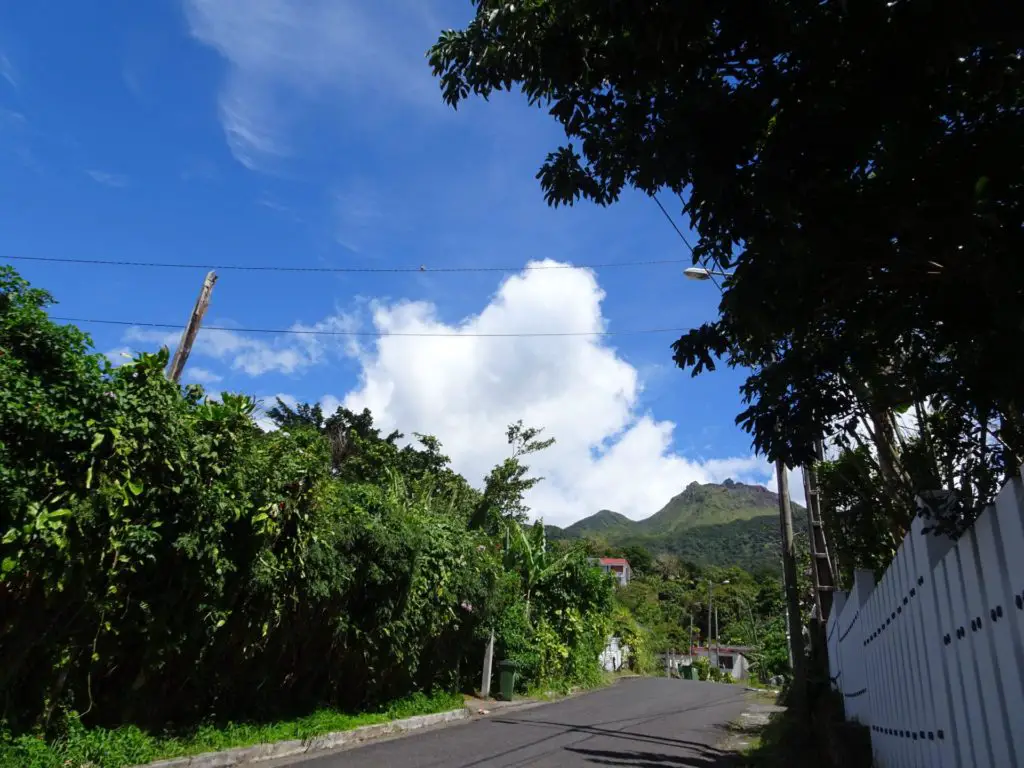
The central bus terminal is located close to the sea at the big roundabout south of the strikingly white parliament building (Palais du conseil general). You can also board the bus anywhere along Rue Eboué, Rue Victor Hugues or Avenue de Saint-Claude. From the terminal, it only takes about 15 to 20 minutes to reach the Saint-Claude.
Once you’re in Saint-Claude, you’ll have to follow the main road through the village towards the mountain, which will be well visible on a clear day. The parking area at “Les Bains Jaunes” is where the real hike up La Soufrière begins. From here, you’ll have about 500m (1,600ft.) of elevation to gain.
Where to stay near La Soufrière
We decided to climb La Soufrière in the afternoon and spend the night at Sainte-Claude, but technically it should be doable as a day-trip from Basse-Terre or even Pointe-à-Pitre. Should you decide to stay in Saint-Claude, the only budget options are private rooms like Chez Ena or the aptly named Studio proche de la Soufrière.
If you’re aiming for an early start, Les Pimentiers de Papaye is located already pretty high in the village, close to the trailhead for La Soufrière. If money isn’t an issue, there are also a couple of mid-range options in town, e.g. Hôtel Saint-Georges.
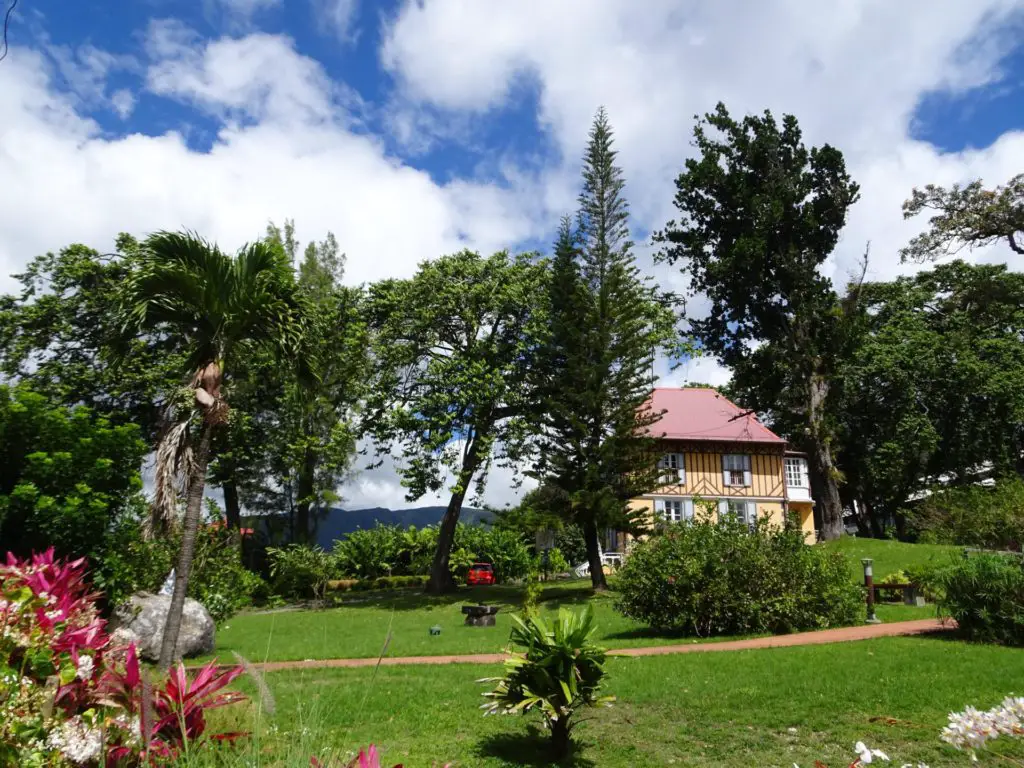
Do I need a guide for climbing La Soufrière?
The trail is well-marked and mostly easy to navigate, although it gets somewhat more difficult the closer you get to the top, and you’ll be required to scramble a bit. I would say that for a reasonably fit and experienced hiker, it’s very doable without a guide.
When to hike La Soufrière
It’s hard to give a straight answer, as there is no perfect time for climbing La Soufrière, and it depends on the current weather situation.
We ended up climbing it a day earlier than we originally planned, as the weather was clear when we arrived in Saint-Claude in the afternoon. Going for the hike right away was the right decision, as it was again tightly shrouded in clouds the next morning.
When you’re planning to climb La Soufrière, it really pays to have a somewhat flexible itinerary, as your enjoyment will be so much higher on a clear day. It’s best to check the weather forecast, as it’s very possible that the top is shrouded in clouds in the morning, which will dissipate in the afternoon.
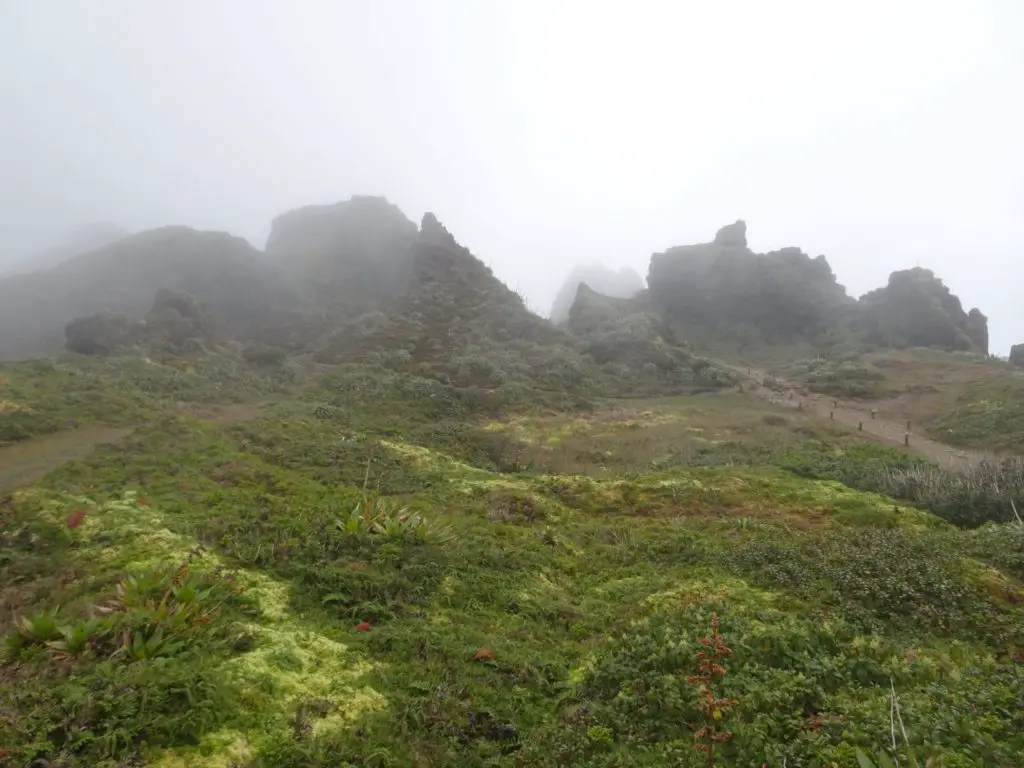
Don’t be discouraged if clouds suddenly move in on the way up, as they might vanish just as quickly. We entered a wall of mist several times on the way up, but were still rewarded with a clear view in the end.
How long does the hike up La Soufrière take?
It took Stefanie and me a little under two hours to hike from the trailhead at Les Baines Jaunes to the top, and about 1 hour for the way back. If you want to spend some time at the top, enjoying the views and staring mesmerized at the crater (like we did) you should plan around 4 hours for the whole hike. Add an hour, if you plan on walking to the trailhead from Saint-Claude.
What to bring?
Apart from enough drinking water and some snacks, you might consider taking some swimwear and a towel in case you decide to stop by the warm springs on your way back.
How much does it cost to climb La Soufrière?
Nothing at all – La Soufrière and the surrounding National Park are two of many cool natural attractions on Guadeloupe that are completely free.
Description of the hike up La Soufrière
First of all, you’ll have to get to the proper trailhead at the parking-spot “Les Bains Jaunes” (about 950m/3,100ft. elevation) by either driving or walking along the asphalt road leading up from Saint-Claude. The eponymous baths are a good opportunity to soak your likely aching muscles after your hike.
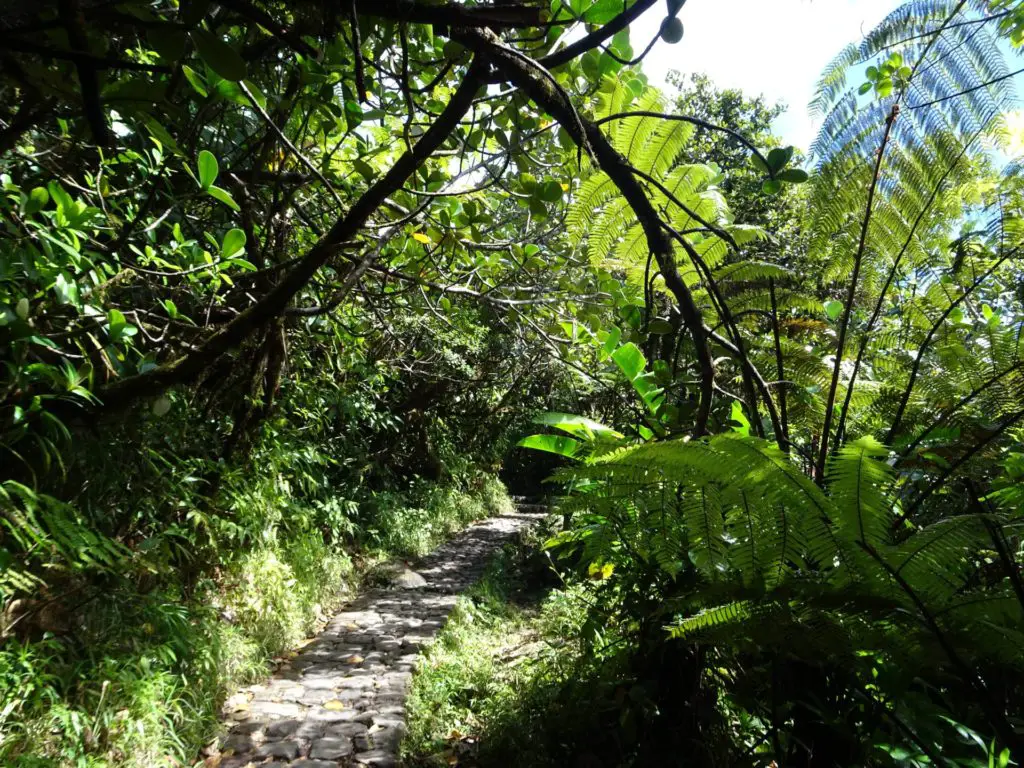
From here you’ll have to follow the trail which climbs gently through the beautiful rainforest. Nature lovers will delight at the many opportunities to spot local birds and wildlife. On the way, we spotted many Lesser Antillean Flycatchers, as well as some hummingbirds and even a sneaky mongoose (which were apparently introduced to the Antilles in the late 19th century).
After about 20 to 30 minutes, you’ll leave the forest behind you and the trees will be replaced by low shrubs. After a couple of minutes, you’ll reach the former parking lot at the old trailhead, which has been inaccessible for cars since the 1976 eruption of La Soufrière.
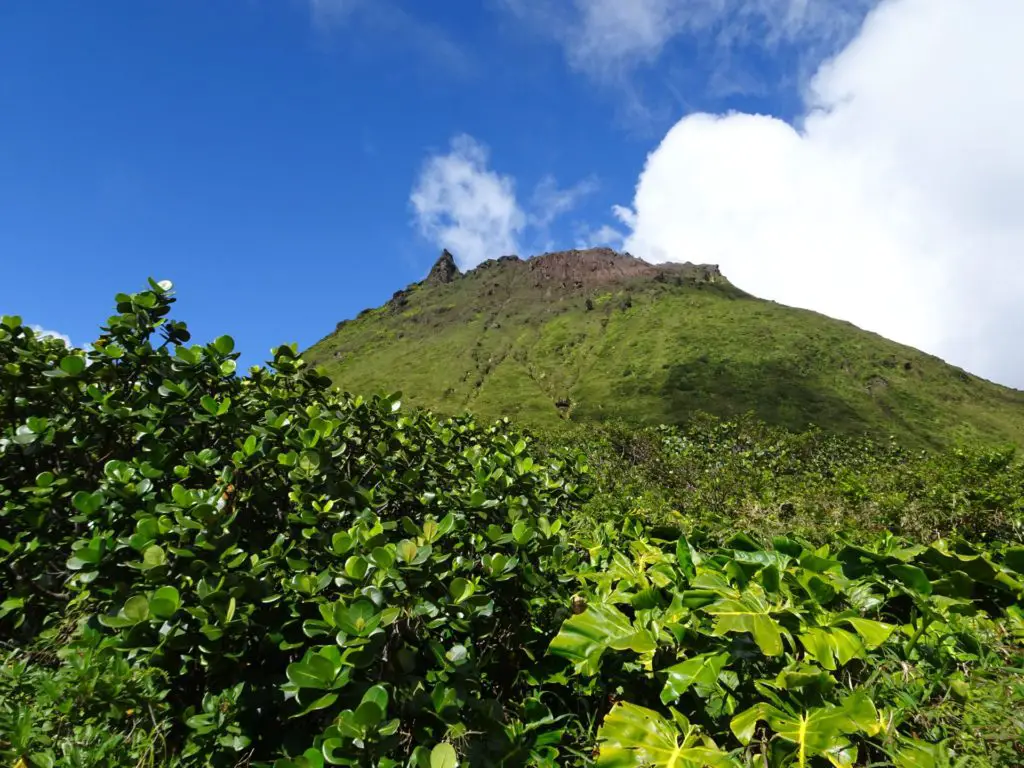
From here on out, navigating the path requires a bit more attention than before, as it becomes narrower, rockier and steeper. Definitely watch out for seemingly solid rocks that will sometimes break loose once you tread on them.
As you’ve left the forest behind you, this is also where the fantastic views to the West and South begin (if the weather is clear), so make sure to stop once in a while to take a look behind you.
The route, called “Le Chemin des Dames” (The Ladies’ Trail) follows the western slope of La Soufrière, eventually circling around to the north where the final ascent to the top starts. This requires some light scrambling up increasingly bigger rocks. It’s not too tough, but it comes at a point when you’ll likely be slightly exhausted, so try to be careful.
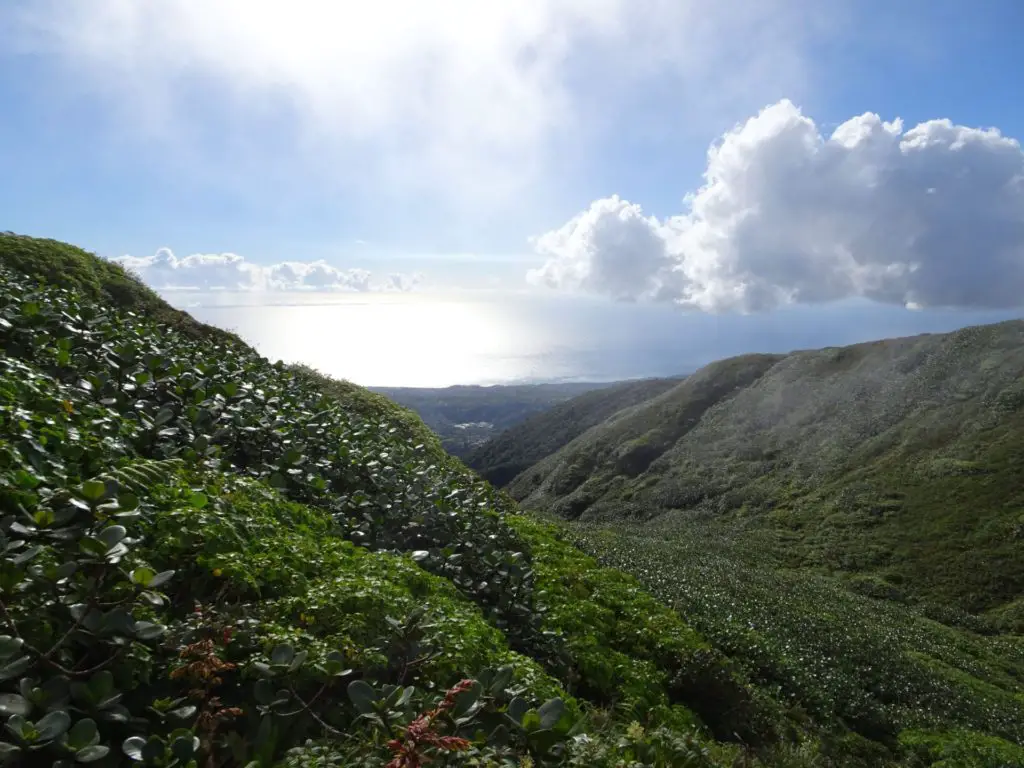
On this section of the hike, you’ll also pass some of the fault lines showing the enormous geological stress on the volcano. La Grande Faille is the biggest of these and looks almost like a small gorge. From this point, a final push of maybe ten minutes brings you to the plateau at the top.
On top of La Soufrière, you’ll be able to enjoy the fantastic views in all directions by walking around the rim. The plateau is criss-crossed by small trails leading around various cracks and sinkholes.

The big crater itself is quite a mesmerizing sight, constantly spewing smoke, but there are other points of interest, including a section of fractured rock known as Portes de l’Enfer (Gates of Hell). The remains of countless lava tubes and fault lines can be seen all over the top, standing as a testament to La Soufrière’s history of eruptions.
Also look out for the strikingly red Pitcairnia bromeliad flowers growing in some sections of the plateau, lending some colour to the landscape. When you’ve had your fill of rocks and smoke, circle around to the northern portion of the top and descend the way you came.

Where to go next
Deshaies, a beautiful beach town and filming location for the BBC’s “Death in Paradise”
Pointe-à-Pitre, the biggest and most vibrant city on Guadeloupe
